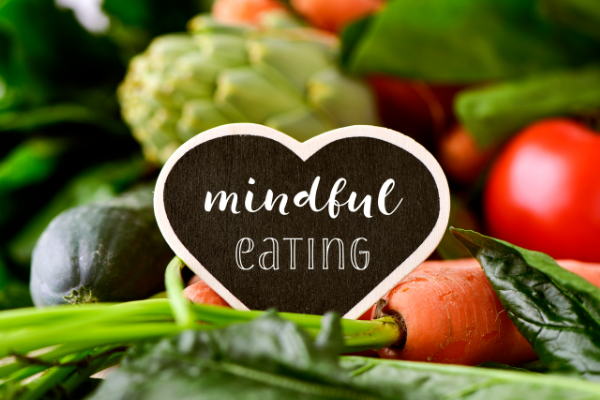 It is not only what we eat, but how we eat that can affect how we feel. How often do you just go through the motions of quickly eating without really stopping to savor the moment and considering the special attributes of the food?
It is not only what we eat, but how we eat that can affect how we feel. How often do you just go through the motions of quickly eating without really stopping to savor the moment and considering the special attributes of the food?
When we rush and inhale our food mindlessly, we can feel anxious and experience some physical health issues like an upset stomach. On the other hand, eating mindfully as a family can help us reduce stress, maintain healthy diet habits, and improve our relationships. It also gives us the space to appreciate the delicious, nutritious treats that come from the earth.
What Is Mindful Eating?
So, what is mindful eating? This practice allows us to realize the positive, nurturing opportunities that can come from preparing and eating food. Instead of shoving food into our mouths and never really thinking about it, mindful eating awakens us to an entirely new experience with food. We can take a moment to savor and truly enjoy what we are eating.
How Children Can Learn Mindful Eating
We can introduce some simple activities at mealtime so that our children can slow down and eat mindfully.
- Invite your children to help prepare a meal. Focus on the range of colors of ingredients and how they smell and feel. Talk to them about the changes in foods when they are cooked, such as boiling vegetables to make them softer.
- Eat together as a family at the kitchen table and engage in positive, interactive conversation.
- Ask children to use their five senses to describe the food on their plates: color, texture, smell, taste, sounds as they chew.
- Talk about where the food comes from, such as farming, fishing, or your own garden.
- Consider taking a meal outdoors to soak in the nature while you eat. This could be on your balcony, out on your back patio or deck, or head over to a local park for a picnic.
- Lead a mindful eating exercise, such as this one with an orange. You can adapt this process to any type of food.
- Start by holding an orange in your hand. Roll it around. Touch different parts of it. Notice how it feels. Is it hard or squishy? Is it smooth or rough?
- Inhale the fruit’s scent. What does it smell like? Do different parts of the fruit have different smells?
- Look at the fruit closely and from various angles. What colors do you see? Is the skin smooth or bumpy? What shape is it? What does it remind you of?
- Slowly peel your orange, paying attention to how it feels in your fingers. Notice the juiciness, wetness, and any distinctions between how the inside and outside feel.
- Take a whiff of the inside of the orange. Does it smell differently now that it is peeled?
- Now it is time to taste the orange. Take a slow bite and notice how it feels on your tongue, on the inside of your cheeks, and against your teeth. How would you describe the flavor? Sweet, sour, bitter, etc.? Notice the texture of the piece of orange in your mouth and any juiciness as you chew it. Does it take much effort to chew it? Take your time and be mindful as you chew, taste, smell, and feel each bite of your orange.
- Have fun reflecting on this experience together.
Remember These Five Steps
During the Mrs. Mindfulness Summit, Dr. Susan Albers of the Cleveland Clinic, an expert on mindful eating, suggested a five-step program for changing the way we eat. She gave a clever quote for each step so we can easily remember them.
- Sit down: “Only eat off your feet”
- Chew slowly: “Pace, don’t race”
- Savor food and take mindful bites: “We eat…just eat”
- Simplify and place healthy foods in accessible places: “In sight in mind, out of sight out of mind”
- Smile between each bite and take a pause: “Take a breath to manage stress”
How have you incorporated mindful eating into your family meals?










